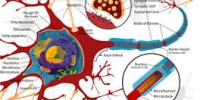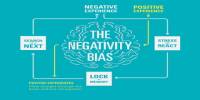Anxiety disorders are a type of mental health condition. This is a group of mental disorders characterized by significant and uncontrollable feelings of anxiety and fear that significantly impair a person’s social, occupational, and personal function. Anxiety makes it difficult to get through the day. Anxiety can cause physical and cognitive symptoms such as restlessness, irritability, easy fatiguability, difficulty concentrating, increased heart rate, chest pain, abdominal pain, and a variety of other symptoms that vary depending on the individual. Symptoms include nervousness, panic, and fear, as well as sweating and a rapid heartbeat. Medication and cognitive behavioral therapy are among the treatments available.
Anxiety is a normal stress response that can be beneficial in some situations. It can warn us of dangers and assist us in preparing and paying attention. Anxiety disorders are distinguished from normal feelings of nervousness or anxiety by the presence of excessive fear or anxiety. Anxiety disorders are the most common type of mental illness, afflicting nearly 30% of adults at some point in their lives. Anxiety disorders, on the other hand, are treatable, and a variety of effective treatments are available. Treatment enables the majority of people to live normal, productive lives.
Anxiety disorders are a type of mental health condition. The words anxiety and fear are frequently used interchangeably in everyday speech. If you have an anxiety disorder, you may react to certain things and situations with fear and dread. In clinical terms, they have distinct meanings: anxiety is defined as an unpleasant emotional state for which the cause is either not easily identified or is perceived to be uncontrollable or unavoidable, whereas fear is defined as an emotional and physiological response to a recognized external threat. Physical symptoms of anxiety include a racing heart and sweating. Anxiety disorder is an umbrella term for a number of specific disorders that include fears (phobias) or anxiety symptoms.
Generalized anxiety disorder, specific phobia, social anxiety disorder, separation anxiety disorder, agoraphobia, panic disorder, and selective mutism are the different types of anxiety disorders. Individual disorders can be identified based on their distinguishing symptoms, triggering events, and timing. If a person is diagnosed with an anxiety disorder, he or she should be evaluated by a medical professional to ensure that the anxiety is not the result of another medical illness or mental disorder. An individual can have multiple anxiety disorders over the course of their life or at the same time, and anxiety disorders typically have a persistent course. There are a variety of treatments and strategies available to assist people suffering from anxiety in improving their mood, behaviors, and ability to function in daily life.
Anxiety disorders are more common in women. Researchers are still investigating why this occurs. It could be caused by women’s hormones, particularly those that fluctuate throughout the month. The hormone testosterone may also play a role — men have more of it, and it may help with anxiety. It’s also possible that women are less likely to seek treatment, exacerbating their anxiety. Generalized anxiety disorder, social anxiety disorder (social phobia), specific phobias, and separation anxiety disorder are all examples of anxiety disorders. You can have multiple anxiety disorders. Anxiety can be caused by a medical condition that requires treatment.
















